#Coastal Fortification
Text
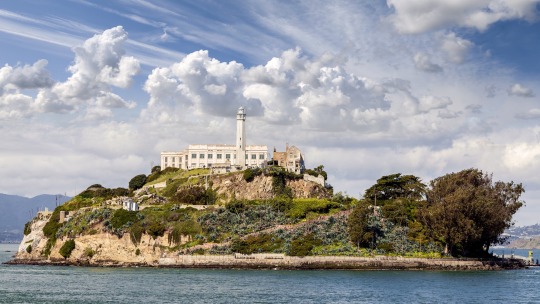
Alcatraz Island still draws tourists for its history as a federal penitentiary. But it also has a rich past as little-known military base, erected to guard against foreign invasion. Image Credit: Mbprojekt Maciej Bledowski, iStock
Ground-Penetrating Radar Reveals Military Structures Buried Beneath Alcatraz Penitentiary
Using non-invasive techniques, archaeologists have confirmed the presence of a coastal fortification beneath what was once the prison’s recreation yard.
— By Katherine J. Wu, Published March 4, 2019 | August 02, 2023
Alcatraz might be best known as a popular tourist destination, the site of the former high-security prison that once held Al Capone. But a team of archaeologists has now unveiled new evidence of this San Francisco Bay island’s often overlooked military history.
In the study, published last Thursday in the journal Near Surface Geophysics, researchers used non-invasive technologies to pull back the curtain on a stunningly well-preserved 19th century coastal fortification that lies beneath the ruins of this infamous federal penitentiary. The work confirms that while prison construction in the early 1900s destroyed much of the former military installation, several structures were buried more or less intact, enshrining a critical sliver of Alcatraz’s colorful past.
“This really changes the picture of things,” says study author Timothy de Smet, an archaeologist at Binghamton University. “These remains are so well preserved, and so close to the surface. They weren’t erased from the island—they’re right beneath your feet.”
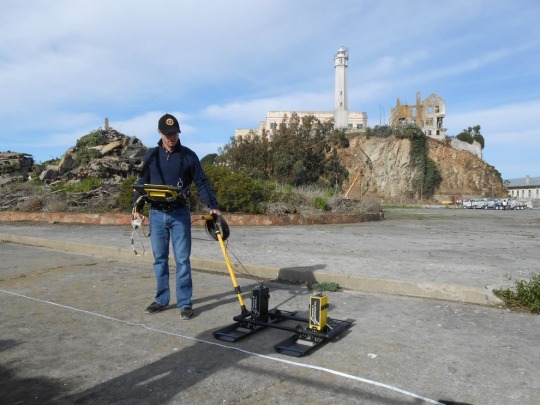
Study author Timothy de Smet used non-invasive techniques to create a subsurface map of remains of Alcatraz Island's former military fortification. Image Credit: Timothy de Smet, Binghampton University
Prior to the mid-1800s, Alcatraz Island was a barren strip of land capable of supporting little more than a raucous population of seabirds. But in the wake of the California Gold Rush, the United States government looked to the rocky outcrop as a potential military base to protect the newly bustling city from foreign invasion. Over the next several decades, a stone- and brick-based fortification was erected, then rebuilt as earthen structures better equipped to handle erosion. But Alcatraz struggled to keep pace with the rapid changes in artillery during and after the Civil War era, and by the late 1800s, the island’s defenses were essentially obsolete. Military pursuits on Alcatraz were abandoned shortly thereafter.
When the island’s prison was erected around the turn of the 20th century, little physical evidence of its former architecture remained—or so many thought. The new study, led by de Smet, says otherwise. To look beneath the surface, the researchers deployed ground-penetrating radar, which pulses electromagnetic waves into the earth, returning signals that can visualize remains without excavation. The strategy uncovered a labyrinth of subterranean structures, including an earthwork traverse, a kind of defensive trench, running beneath the penitentiary’s former recreation yard.
“Below the Surface, Alcatraz is Still Full of Mysteries”
“This really reinforces what several historians and archaeologists had long suspected,” says study author and Alcatraz historian John Martini. “Up until this point, we had nothing to go on except for a few visible trace remains and maps—and a lot of suspicion.”
In a way, Martini says, the findings reflect just how limited real estate was on Alcatraz, which clocks in at less than 50 acres. “On a small island, there’s only so many places you can build,” he says. “And it’s unlikely they went to the trouble of demolishing all this stuff.”

A 15-inch Rodman cannon and its gun crew, 1869. These were the largest guns mounted on Alcatraz. Image Credit: National Park Service, Golden Gate National Recreation Area
Because they’re both sensitive and non-destructive, techniques like ground-penetrating radar are crucial for these kinds of investigations, and can complement historical records that survived the era, says Jolene Babyak, an Alcatraz historian who was not involved in the study.
With these results in hand, de Smet and his colleagues plan to continue archaeological investigations under Alcatraz. Going forward, only time will tell what this rock will reveal, Martini says. “Below the surface, Alcatraz is still full of mysteries,” he says. “There’s still a whole lot to be learned.”
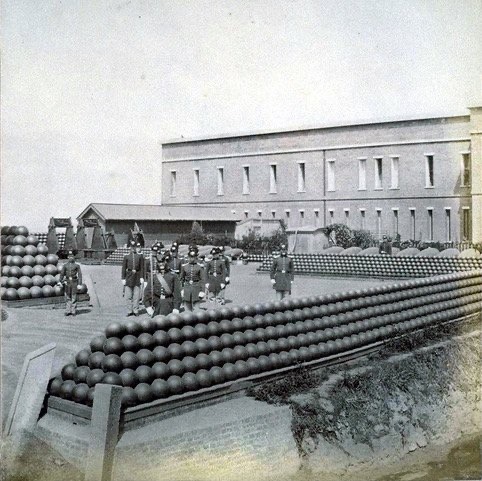
Soldiers posing in the island’s ordnance yard. A brick Citadel capped the summit of Alcatraz. 1869. Image Credit: National Park Service, Golden Gate National Recreation Area
#NOVA | PBS#Ground-Penetrating Radar#Military Structures#Alcatraz Penitentiary#Non-invasive Techniques#Archaeologists#Coastal Fortification#Tourist Destination#High-Security Prison#Al Capone#San Francisco Bay#Military History#Near Surface Geophysics#Timothy de Smet#Binghamton University#California Gold Rush#Civil War Era
3 notes
·
View notes
Photo
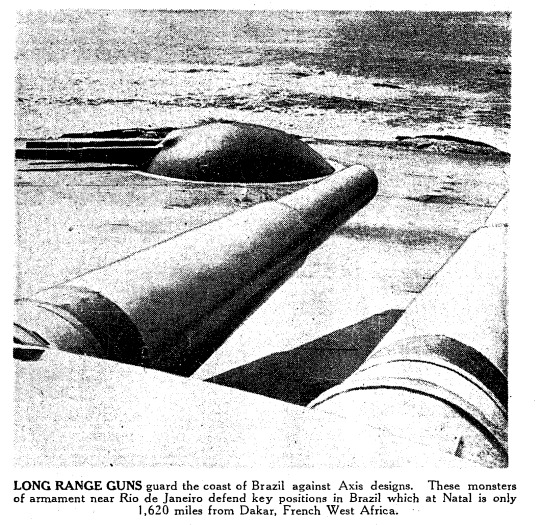
“LONG RANGE GUNS guard the coast of Brazil against Axis designs. These monsters of armament near Rio de Janeiro defend key positions in Brazil which at Natal is only 1,620 from Dakar, French West Africa.”
- from the Toronto Star. February 28, 1942. Page 21.
#rio de janeiro#brazil during world war 2#battle of the atlantic#western allies#brazilian history#dakar#coastal artillery#coastal fortification#world war II
0 notes
Text
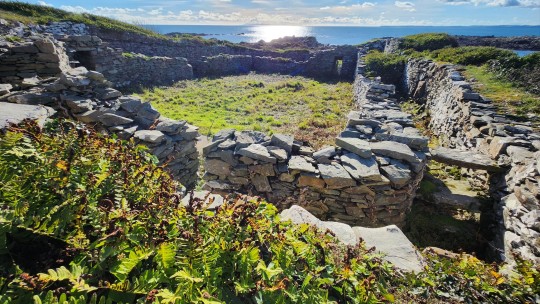
Castle Haven Iron Age Dun, nr. Borgue, Dumfries and Galloway, Scotland
#ice age#stone age#bronze age#copper age#iron age#dun#fortification#defensive#settlement#broch#tribal#community#archaeology#landscape#outdoors#wild places#coastal#coastline#Scotland
107 notes
·
View notes
Text

Des observateurs scrutent le ciel depuis un fort maritime Maunsell dans l'estuaire de la Tamise - 19 novembre 1943
Photographe : Lieutenant Tanner
©Imperial War Museums – H 34542
La photo est prise depuis la tour d'éclairage pour le tir antiaérien. A l'arrière-plan on remarque les tours équipées de batteries antiaériennes.
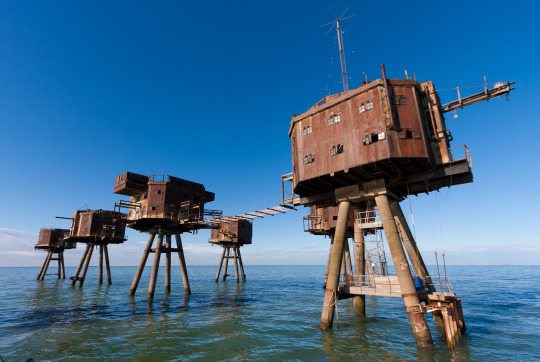
Le fort Maunsell de Red Sands dans l'estuaire de la Tamise au nord des côtes du Kent - 20 août 2011
©Russss
#WWII#défenses côtières#coastal defences#défenses antiaériennes#anti-aircraft warfare#air defence#fortifications#forts maunsell#maunsell forts#tamise#thames#red sands#angleterre#england#grande-bretagne#great britain#19/11/1943#11/1943#1943#20/08/2011#08/2011#2011
12 notes
·
View notes
Text
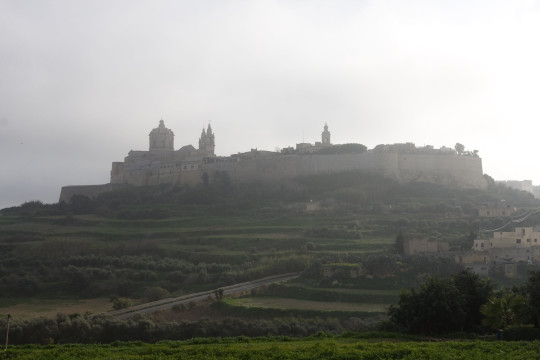
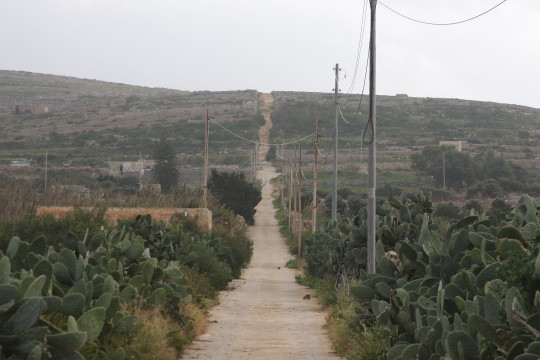
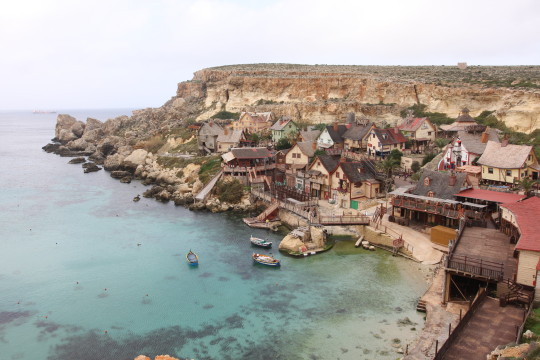

Malta (2) (3) (4) by Don McDougall
#fortifications#landscape#road stretching out#telephone wires#cacti#coastal#waterfront#small town#island#boats#malta
5 notes
·
View notes
Text

Scottish castle by the sea and Viking ship
#scottish castle#castle#tower house#fortress#tower#defense#fortification#old#home#building#architecture#house#scotland#scottish highlands#landscape#picturesque#coast#coastal landscape#sea#ocean#great britain#aerial view#nature#3d#illustration#viking#viking ship
0 notes
Text
No update today as I'm still working on the script for this chapter and have some IRL obligations this weekend. In the meantime, quick ask response below the cut!

I've had a couple of thoughts on this subject but nothing super concrete, so here you go! Also -- I'm always excited to talk about worldbuilding, so no need to apologize!
Back when Andrew was a child and the ancient spirits were newly-locked-away, precautions for blood moons (and other dangerous events) were a lot more intense. Main reason being that people still remembered the preceeding years where such fortifications were absolutely necessary, and since the memories were still fresh and the infrastructure/protocol still in place, it still got used. Living out on the edge of the plains, they would likely have had plans in place to get underground quickly and then sweep the town the next morning for any remaining monsters.
Chris, in comparison, is from a modern coastal town. The main precautionary system there is a bell system that alerts people when a blood moon begins rising to give them even a small amount of notice to prepare, and fishing is strictly banned. His hometown also has walls around the main land-facing portion with a local guard stationed along them, helping keep out monsters from entering on foot. This helps ensure people can get inside, block their doors, and safely hunker down for the night. All of this is organized by the local Guide and helps to keep folks safe.
Purity Town, and the region the town (and other settlements) is in, has fewer precautions in place due to the relatively low population. Chris' hometown can get away with heavy infrastructure because it has the population to support it, and Andrew's hometown did it out of fear/necessity. In Purity Town's region, people like Malik might run around near the start of a blood moon to make sure everyone is able to get inside safely, cover their windows, and so on. It's also generally accepted that people who go out late at night should have a plan for what to do if a blood moon suddenly begins, because the region is just too remote to go out looking for them.
As for frequency, I'm inclined to say somewhere between monthly and every few months -- quite irregular, but happening often enough that it's not uncommon.
29 notes
·
View notes
Photo
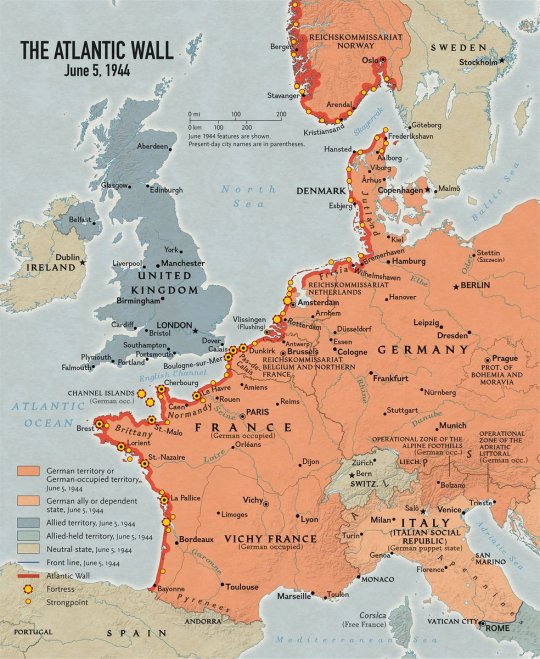
Allied staff officers debated where to pierce the Atlantic Wall, German coastal fortifications extending from Norway to the southwest coast of France. They ultimately decided on Normandy.
From the Atlas of World War II >>
by @NatGeoMaps
81 notes
·
View notes
Text
In this coastal ecology, no fixed separation between land and water. The “polymorphous personality” of the mangrove ecosystem defies stable boundaries. The mangrove’s name is a combination of Malay and Arabic, of Portuguese and English. At the Sundarbans of Bengal, the largest mangrove region, the “sea forest” is marked by unfixity and a porous quality that undermines formal political boundaries, demonstrating “the trembling instability of borders”. While Euro-American legal institutions rely on clear delineation of land to recognize tenure, Yolgnu Aboriginal communities and Dholupuyngu cosmology cannot be contained. The landscape respires, is in flux, among the tidal seas of mangrove forests, “antithetical to the manicured” lawn.
---
[T]his tropical coastal ecology is a site of continual refiguration: neither sea nor land, neither river nor sea, bearing neither salty nor fresh water [...]. The mangrove has been prone to confused definitions, since it is a grouping of over eighty specialized plant species that survive as “botanical amphibians,” but is also a complex coastal ecosystem in itself. With these hybrid conditions of “belonging,” the mangrove lends itself to helping us think through the present-day schematic of Euro-American crises amid larger constellations of political insurrections and migratory movements. Its polymorphous personality as a sediment-carrier, land-builder, defender of numerous life forms, and also an inadvertent protector of pirates renders the mangrove a fascinating study in the biopolitics of selfhood. [...]
---
The mangrove also traces a language cartography, setting sail through the routes of travel and the histories of encounter to which mangrove-naming bears witness. The hybrid terms that define mangroves in different linguistic cultures become conveyors of sociopolitical contact between civilizations and coastal ecologies. For instance, the combination of the old Malay word “mangi mangi” and the Arabic word “el grum” refers to the Avicennia genus of mangrove tree, which is a favorite attraction for fireflies. Or consider the juxtaposition of the Portuguese “mangle” with the English word “grove” [...].
However, the mangrove’s intense bed of foliage, punctuated with prop and stilt roots, remains antithetical to the manicured and decisively cultivated grove. It may therefore be more productive to reflect on the mangrove’s word origins not merely through land, but as linkages with a specific kind of tree and tide.
The Sundarbans covers an area of 10,000 square kilometers of intertidal zones between parts of southwestern Bangladesh and the state of West Bengal in India. The largest mangrove forest in the world, its name bears the combined genesis of a beautiful “sea forest” and of the Sundari tree, the Heritiera fomes species of mangrove, which grows across these wetlands in abundance. [...]
---
As a landscape, the Sundarbans is marked by unfixity, since its intertidal nature places it between appearance and disappearance -- with islands being submerged overnight. It is ironic that while the aerial root systems of mangroves are highly valued as fortifications against the onslaught of angry tidal waves (as experienced during the tsunami of 2004) their porous quality does not allow for clear border-making. In reading this satellite image of the Sundarbans, produced by what is said to be “the most stable, best characterized Earth observation instrument ever placed in orbit,” we are met with the trembling instability of borders. The water channels eat into the land as gnarled roots of mangrove, uncontainable on ground and from an aerial view -- here the coastline becomes indiscernible as a single entity.
---
The legal vexations of such amphibious and obtuse terrain become pronounced in sea-rights cases, wherein border-making becomes the necessity of tenure. Forming rulings over such zones lays legality prone to paradox. In the Blue Mud Bay case, heard by the High Court of Australia in 2008, a legal body was called upon to make a determination regarding the shifting geography of a mangrove coastal region. In the final ruling the aboriginal Yolgnu claimants were successful, with the court ruling that the column of tidal water lying above land should be regarded no differently from the land itself. Thus the court’s attempt to encompass Dholupuyngu cosmology and “aqueography” occasioned a legal magic transforming water flow into the fixity of “land.” [...]
In the intertidal and interpenetrating zone of the mangrove, the border between land and sea becomes a choreography of re-crossings. The mangrove line is, hence, one of sedimentary reclamation rather than clear political divisions of terra firma. In mangrove zones, human determinations become ghosts.
---
Text by: Natasha Ginwala and Vivian Ziherl. “Sensing Grounds: Mangroves, Unauthentic Belonging, Extra-Territoriality.” e-flux Journal Issue #45. May 2013. [Bold emphasis and italicized first paragraph in this post added by me.]
145 notes
·
View notes
Text
Lord of the Revel - CR13 Kami
How our hearts sing in the chaos!
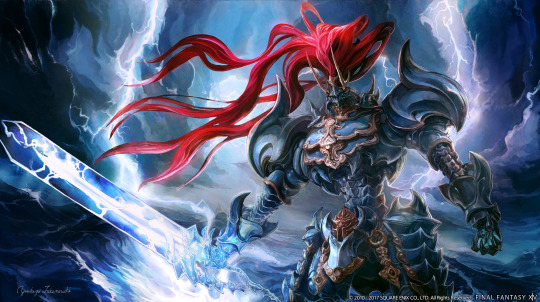
Artwork is official concept art from Final Fantasy XIV, copyright Square Enix.
This creature is based on Susano, a boss from Final Fantasy XIV. Susano is a primal, a recurring type of boss from Final Fantasy XIV that's essentially a summoned artificial demigod, created from the imagination of those that believe in it, and often a recreation of a real historical figure or other powerful monster. This stat block isn't meant to be a primal, though; it's a stat block for the original creature that the primal was an imitation of. I've previously also made a stat block for Ramuh, another primal from FF14, plus several other classic Final Fantasy summons that you can find by searching my blog for the final fantasy tag.
You could absolutely use this creature in the Final Fantasy D20 system, which is based on Pathfinder rules. However, I did create some lore for this as an actual Pathfinder creature. I think that’s helpful to people who aren’t familiar with the source material, as well as to people who aren’t running their game in a Final Fantasy setting but want to use this creature anyway.
A lord of the revel is an ancient kami spirit. Each kami has a ward - a type of creature, object, or location that the kami's purpose is to watch over and protect - and a lord of revel's ward is a gladiatorial arena. They have water and electricity themed powers, and especially tend towards watching over arenas in oceanic or coastal civilizations that understand and respect the power of storms. Such civilizations sometimes worship and commune with lords of the revel, and it's become a tradition to invite them to be the host and/or the final battle of a gladiatorial tournament. The trophy of such a tournament - traditionally a powerful magic weapon - can be used in the ritual to summon a lord of the revel, and if summoned, it will immediately begin challenging anyone it sees to face it and revel in the glory of combat. The winner earns the right to take the prize weapon and have it empowered by the kami's essence.
If you decline a lord of the revel's challenge, but you appear to have martial prowess, it sometimes won't take no for an answer. Lords of the revel love combat, and constantly shout both challenges and encouragement to their opponents during combat, as well as invitations for onlookers to join the fight.
Lord of the Revel - CR 13
Standing twenty feet tall and wielding an electrified blade, the massive frame of this swordsman is completely hidden by its decorative armor, but the sound of a thunderstorm can be heard echoing from within the plate mail.
XP 25,600
CG Huge outsider (kami, native)
Init +5
Senses darkvision 60 ft.; Perception +17
Aura lightning blasting aura (DC 26; 60 ft.)
DEFENSE
AC 26, touch 11, flat-footed 24 (+12 armor, +1 Dex, +1 dodge, +4 natural, -2 size)
hp 229 (17d10+136)
DR 10/cold iron
Fort +17, Ref +8, Will +14; +12 vs. water effects
Immune electricity, wind effects
OFFENSE
Speed 35 ft. (50 ft. without armor)
Melee +3 shocking burst bastard sword +26/+21/+16/+11 (3d8+13/19–20 plus 1d6 electricity)
Special Attacks dark clouds, part the seas, part the skies, rasen kaikyo
Spell-like Abilities (CL 13th; concentration +16)
1/day—storm prison (DC 18; see text)
STATISTICS
Str 24, Dex 13, Con 24, Int 8, Wis 14, Cha 16
Base Atk +17; CMB +26 (+30 bull rush); CMD 37 (39 vs. bull rush; +12 vs. water effects)
Feats Armor Focus (full plate), Dodge, Greater Bull Rush, Improved Bull Rush, Improved Initiative, Lightning Reflexes, Iron Will, Toughness, Weapon Focus (bastard sword)
Skills Acrobatics +4, Climb +15, Diplomacy +5, Knowledge (local) +9, Perception +15, Swim +22
Languages Aquan, Auran, Common; telepathy 100 ft.
Gear Huge +2 moderate fortification full plate, Huge +3 shocking burst bastard sword
SPECIAL ABILITIES
Dark Clouds (Su)
Once per day as a free action, a lord of the revel can summon two dark clouds which appear within 100 ft. of the lord of the revel. The dark clouds have the statistics of huge air elementals, except that they cannot use the whirlwind special ability or attack in any way, except for the line attack described below. They roll initiative rather than acting on the lord of the revel's turn, but share the same initiative as each other.
While the dark clouds are no more than 100 ft. from the lord of the revel, and have line of sight and line of effect to each other, they can both use a full-round action to blast all creatures in a direct line between them, and within 5 ft. of that line, with electricity and wind. Creatures on this line and within 5 ft. of it, other than the dark clouds and the lord of the revel, take 8d6 electricity damage, and the area of this effect is treated as severe wind for 1 round, moving in a direction from one dark cloud to the other (the dark clouds' choice which direction). This acts as the gust of wind spell. A DC 19 Reflex save halves the damage, and a DC 19 Fortitude save negates the wind effect. The save DC is based on the average Constitution bonus of the dark clouds.
The dark clouds last for 10 minutes. If one dark cloud is destroyed, the other is immediately destroyed as well.
Storm Prison (Sp)
Once per day as a spell-like ability, a lord of the revel can encase a target within medium range (typically 230 ft.) in electrified stone, functioning as the icy prison spell (caster level 13, DC 18, 39 hp) except that the damage is electricity instead of cold.
A target completely encased in this electrified stone is capable of withstanding the tornado created by a lord of the revel's Part the Skies ability, and takes no effect from it. The electrified stone itself takes 8d8 damage from the tornado.
Spell resistance applies. Treat this as a 5th-level evocation [electricity] spell.
Lightning Blasting Aura (Su)
When below half hit points, a lord of the revel gains a lightning blasting aura. Each round at the start of its turn, enemies of the lord of the revel within this aura take 1d8 electricity damage with no save.
Moderate Fortification
A lord of the revel wears moderate fortification armor. When a critical hit or sneak attack is scored on the wearer of this armor, there is a 50% chance that the critical hit or sneak attack is negated and damage is instead rolled normally.
Part the Sea (Su)
Twice per day as a standard action, a lord of the revel can perform a melee attack against a target against its reach and follow it up with a special bull rush made with an extra +30 bonus (typically for a total of +60).
If the bull rush is successful, then immediately afterwards, a massive hurricane of wind and water fills the entire battlefield within a 300 ft. radius of the lord of the revel, counting as difficult terrain and creating partial concealment (20% miss chance) everywhere except for the line of spaces that the target was pushed through by the bull rush. These spaces are the "eye of the storm," and are safe.
A lord of the revel's turn ends immediately after using Part the Sea, even if it has actions remaining. On the following round after using Part the Sea, if the bull rush was successful, a lord of the revel can use Part the Skies.
After using Part the Sea, a lord of the revel cannot use it again for 5 rounds.
Part the Skies (Su)
As a full-round action on the following round after using Part the Seas, a lord of the revel can create a massive tornado that lasts until the start of its next turn, affecting all creatures within 300 ft. that are not in the "eye of the storm" created by its Part the Seas ability, except for itself and its dark clouds. Even creatures outside of the lord of the revel's line of sight and line of effect are affected by the tornado, unless they are in a completely enclosed space capable of withstanding the tornado's winds.
The tornado destroys nonfortified buildings and uproots large trees. Ranged attacks, including normal, siege, and even those produced by evocation spells, are impossible in the tornado. Huge or smaller creatures must succeed a DC 20 Strength check or be sucked up by the funnel of the tornado; this deals 8d8 points of bludgeoning, piercing, and slashing lethal damage to the creatures. This damage ignores all but DR/epic, DR/—, and hardness. Once it deals this damage, the tornado flings the creature it has sucked up 1d20×10 feet up and away from the eye of the tornado, dealing 1d6 points of falling damage per 10 feet that the creature is flung. Gargantuan and larger creatures take the 8d8 points of damage but are not moved by the tornado.
Rasen Kaikyo (Su)
As a standard action, once every 1d4 rounds, a lord of the revel can place five visible magic circles on surfaces within 100 ft. of itself. Each circle has a 20-ft. radius. At the start of the lord of the revel's next turn, each circle erupts into a conjured whirlpool of torrential water, dealing 6d6 bludgeoning damage to targets within the area. A target in the area of multiple whirlpools is affected by each of them. A DC 21 Reflex save halves the damage. The save DC is Charisma-based.
Stormsplitter (Su)
As a full-round action, while below half hit points, a lord of the revel can make a melee attack at its highest base attack bonus against every opponent in a 60-ft. line, supernaturally reaching its targets with a shockwave from its weapon. It must make a separate attack roll against each opponent.
5 notes
·
View notes
Photo
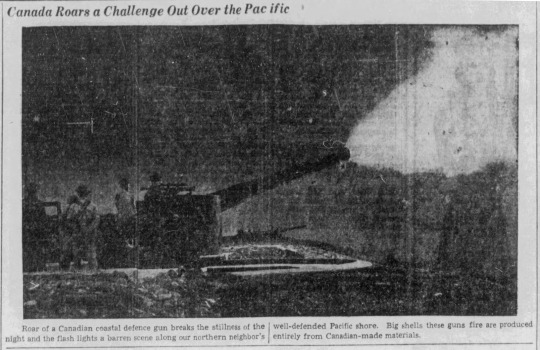
“Canada Roars a Challenge Out Over the Pacific,” Kingston Whig-Standard. March 31, 1942. Page 5.
---
Roar of a Canadian coastal defence gun breaks the stillness of the night and the flash lights a barren scene along our northern neighbor’s well-defended Pacific shore. Big shells these guns fire are produced entirely from Canadian-made materials.
#world war II#pacific war#coastal artillery#coastal fortifications#british columbia history#vancouver island#canada during world war 2#heavy artillery
1 note
·
View note
Text
The Amnya Site I and its fortifications date back approximately 8,000 and is located on the curve of the Amnya River in Western Siberia.
The Amnya II site was also built 50 meters to the east around this time.
Researchers suspect that a shift in climate roughly 8,000 years ago created the stage for an abundance of seasonal resources in western Siberia, prompting an influx of human migrants.
The West Siberian taiga is a sometimes swampy, coniferous forest habitat present in the subarctic. Around 6,000 BCE, the taiga near Amnya would have hosted herds of elk and reindeer, while the river would have been swimming in fish, like pike and salmonids.
In the subarctic boreal landscapes of the Siberian, 8000 years ago, hunter-gatherers built fortified settlements. The building of fortifications by forager groups has been observed sporadically elsewhere around the world in various—mainly coastal—regions from later prehistory onwards, but the very early onset of this phenomenon in inland western Siberia is unparalleled.
Western Siberia, between the Ural Mountains and the River Yenisei, represents a particularly rich ecosystem from a hunter-gatherer-fisher perspective. Fish, aquatic birds, forest fowl and large game such as elk and reindeer have predictable seasonal behaviours,
#history#archeology#archeologicalsite#discovery#hunter gatherer#siberia#research paper#article#settlement
3 notes
·
View notes
Text


1 - Le mur de l'Atlantique, une ligne de défense côtière de 2,685 km construite entre 1942 et 1944
©Uberstroker
2 - Un des bunkers de la batterie d'artillerie de Frederikshavn - Danemark - 5 juillet 2006
Photographe : Arthur Van Beveren
#WWII#mur de l'atlantique#atlantic wall#fortifications#défenses côtières#coastal defences#bunker#frederikshavn#danemark#denmark
12 notes
·
View notes
Text

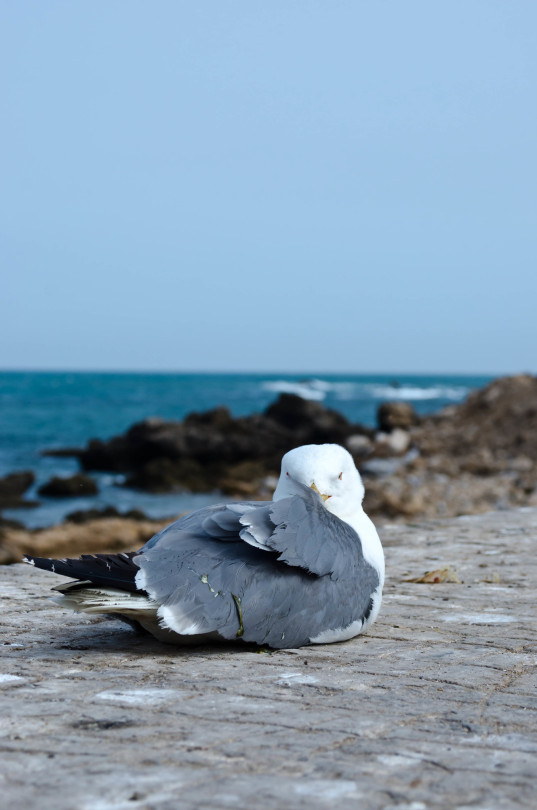
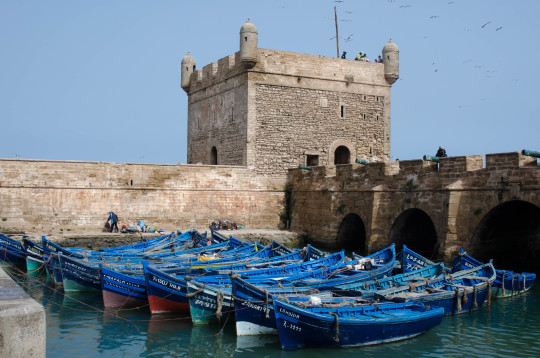
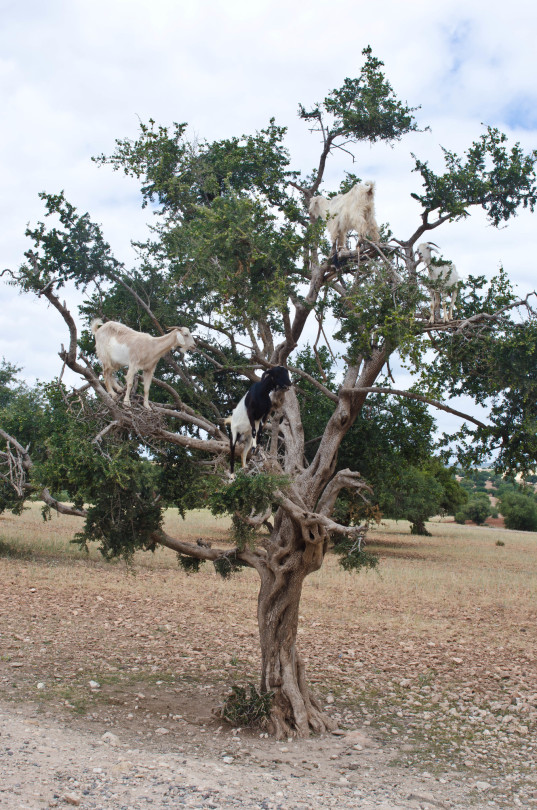

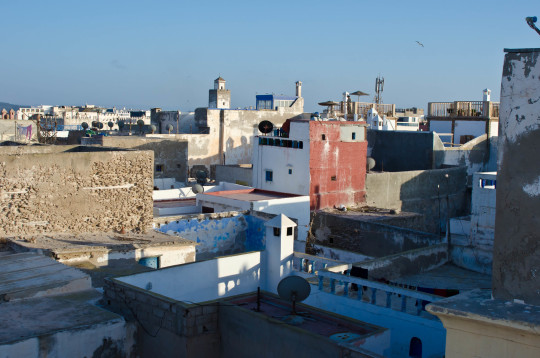
Morocco (2) (3) (4) (5) (6) by hey tiffany!
Via Flickr:
(1) Sheets drying at our hotel in Essaouira.
(4) We only saw one argan tree with goats on the drive between Marrakech and Essouira. There were signs that it was a rehabilitation area for the argan forests. The goats really damage the trees, so other ways of extracting the seeds are being used.
#laundry#birds#seagulls#coastal#rocky shore#boats#harbor#docks#fortifications#goats#gates#decorative element#stairs#rooftops#morocco#marakesh-safi
3 notes
·
View notes
Text
Diplovertebron

Publicity still from The Monster of Piedras Blancas
[By the late 1950s, the Hays Production Code was weakening, and many movies not made by the big studios were released without code approval. This eventually lead to the MPAA and the movie rating system by the mid 1960s, but in the meantime, you had all manner of indie films experimenting with what they could get away with. Which is the major claim to fame of The Monster of Piedras Blancas. This is a Creature from the Black Lagoon ripoff featuring multiple decapitations and the female lead skinny dipping (although no nudity is actually caught on camera) while the monster sniffs her underwear. Pretty intense stuff for 1959! It’s those decapitations that are why I have my version slotted in at such a high CR. I wanted to have it at least have a chance to perform its signature move.
Incidentally, the name Diplovertebron is a real scientific name, for a very incomplete and possibly dubious genus of early tetrapod. The real animal was maybe half a meter long, not even remotely humanoid, and couldn’t pull the head off of even a single skinny-dipper. I can only imagine some screenwriter paging through a paleontology textbook until he spotted a name he thought sounded cool.]
Diplovertebron
CR 11 NE Monstrous Humanoid
This creature is humanoid, with a fleshy nose with barbels drooping over a fanged maw. It has ridges of armor plating along its back and arms. Its hands are oversized claws.
A diplovertebron is an aquatic humanoid with a protective carapace and lethal claws. They can smell blood at great distances, and may travel from afar in order to scavenge or prey upon whatever has spilled it. They require water in order to survive, but twin snorkel-like appendages grow from its head, allowing it to smell the air even while it is submerged. Once it finds prey, it attacks with stealth, hoping to make a kill quickly. They are noted for tearing the heads from their victims, as they seek fatty meals and humanoid brains are an excellent repast.
Diplovertebrons are family creatures, living in kin groups and assisting each other at hunting when possible. A lone diplovertebron is an unhappy one, and they may try to “make” a family by kidnapping people instead of killing them. A diplovertebron can speak Aquan, albeit without much articulation, and some of them find life in sahuagin colonies or among other evil aquatic intelligent creatures. They have very long lifespans, and may survive between 300 and 400 years if not slain by violence.
Diplovertebron CR 11
XP 12,800
NE Medium monstrous humanoid (aquatic)
Init +7; Senses darkvision 60 ft., low-light vision, keen scent, Perception +16
Defense
AC 24, touch 14, flat-footed 20 (+3 Dex, +1 dodge, +10 natural)
hp 147 (14d10+70)
Fort +11, Ref +12, Will +12
Defensive Abilities fortification (50%)
Offense
Speed 20 ft., swim 60 ft.
Melee 2 claws +19 (1d8+7/19-20 plus vorpal critical), bite +19 (1d6+5)
Special Attacks powerful blows (claws), sneak attack +2d6
Statistics
Str 21, Dex 16, Con 20, Int 7, Wis 17, Cha 12
Base Atk +14; CMB +19; CMD 33
Feats Blind-fight, Dodge, Great Fortitude, Improved Critical (claw), Improved Initiative, Power Attack, Stealthy,
Skills Climb +11, Escape Artist +8, Perception +16, Stealth +15, Survival +16, Swim +19; Racial Modifiers +8 Perception, +4 Stealth, +8 Survival
Languages Aquan
SQ water dependency
Ecology
Environment temperate aquatic and coastal
Organization solitary, pair or family (3-6)
Treasure incidental
Special Abilities
Keen Scent (Ex) A diplovertebron can detect creatures by scent in a 180 foot radius, and can smell freshly spilled blood up to a mile, in either air or water.
Vorpal Critical (Ex) If a diplovertebron rolls a natural 20 on a claw attack and confirms the critical hit, the creature struck must succeed a DC 22 Fortitude save or be decapitated. This kills most living creatures instantly. This does not function if the target creature doesn’t have a head. The save DC is Strength based.
46 notes
·
View notes
Text
I'm working on a TTRPG pitch for my group for when our current campaign wraps up. Tell me, which of the following pitches intrigues you more? These are all in the same setting where there is a caustic miasma of corrupted magic that fills much of the wilderness and weakens the barriers that should keep Murderous Void Monsters From Beyond Space/Time from barging into the world. Civilization such as it is mostly endures as a handful of dense, isolated population centers sheltered behind whatever fortifications they can muster.
1.) The Tortoise Citadel: One of the largest cities in the world is built on the back of a stone tortoise statue the size of a small mountain, a relic of a bygone age whose original purpose is lost, but whose construction makes it a very convenient defensible position. This city was once the capital of an empire and remained an important power even after that empire reorganized into a republic. This city was until recently the HQ of an elite international society of Void-Monster Slaying Knights, among the only warriors in the world have a particularly laudable record of prevailing against the creatures. The Knights have recently abandoned the city though, after an ill-advised attempt by the government to legislate them into a formal wing of the Republic army, rather than continuing to honor the political independence that let the Knights operate abroad even in nations that were hostile to the Republic. The government is now flailing around for solutions to the void monster problem that won't involve humbling themselves enough to beg the Knights to return, and there are abundant opportunities for freelance adventurer types to get rich taking bounties. But it's probably best if you put together a solid team, since even the weakest Void Monsters are ludicrously deadly.
2.) The Crawling Metropolis: Gremlins are the most common type of Goblin on the continent, with a strong cultural emphasis on engineering and unorthodox problem solving. One of their three great cities occupies a zone of warding magic that seems to drive the Void Monsters away. The problem is, this zone isn't fixed - it crawls at a rate of a kilometer or two a week up and down a coastal region, but rarely drifts further inland towards the mountains because it seems to favor sea level. The Gremlins have retrofitted their city to be modular, capable of disassembly at the trailing edge and reassembly at the leading edge in little chunks that can be carried by labor golems and excavating machinery. This allows the city to slowly crawl along keeping pace with the safe zone, with work crews constantly scooting pieces of the city from the back around the outer edge and plopping them down in front. But the region is full of weird old ruins, monster nests, hostile dissident gremlins, inconvenient geography, and other hazards. Scouting parties are regularly sent out to figure out what threats there are within the city's most likely path and either neutralize them or report back to the gremlin engineers so they can prepare for the worst. Additionally, before the gremlins picked up the city and started moving it, a number of Fallen Angels slain in the First War had their remains interred here, and those mausoleums are now scattered in god only knows what configuration among the modular city sections. While most monsters rarely intrude into the warded zone, much less the actual city boundaries, sometimes deeply weird ghost-like beings emerge from those mausoleums and need to be dealt with. More importantly, it's entirely likely that if the angelic mausoleums ever slip out of the zone of warding magic there will be real serious consequences.
3.) The Skyship Graveyard: Skyship technology is widespread and has been for centuries, although it's currently in decline because this is an era of sharply limited resources. Often a skyship will become damaged enough that it can no longer travel, but the enchanted machinery that allows it to hover in place is still operational. Such lift systems are usually the sturdiest devices on the ship by far. In one place, enterprising individuals have lashed hundreds of these derelict vessels into a complex three-dimensional city connected to the land below only by huge anchor chains. This is very safe from Void Monsters... but all those lift engines need a lot of maintenance to keep from leaking magical toxins. Gradually the community's ability to keep up with these repairs has fallen behind, and mutations and illness run rampant. Players are a scavenger crew sent out to obtain necessary repair materials by whatever means are necessary.
4.) The Hanging Market: This planet's twin World Trees, growing in a helical curve around each other, are vast enough to support several communities scattered throughout their canopies, clinging to their trunks, or nestled among their roots. One of these is a major port of international trade, a market built of thousands of structures anchored to the trunk of one of the trees, navigable by a labyrinth of bridges, ladders, catwalks, and cargo elevators. Among the goods and services for sale in the hanging markets of Barktap (so called due to the breweries that distill liquor from the sap of the tree, which existed before the rest of the market grew around them) are adventurers for hire. It is an excellent home base for mercenaries who either want to travel the world (the nearby skyship port of Highbridge stretches between the trunks of the two trees), but there's honestly more than enough work in the communities on and around the trees to keep someone busy for a lifetime as well.
5.) The Inverted City: On the west continent there is a vast turbulent thunderstorm that was born of a magical calamity, which has been churning overhead for centuries without depositing a single drop of rain. No one lives towards its middle, but on the edges life is barely possible. One city, occupying fairly well-preserved ruins from a precursor civilization, features a wealth of immense towers that modern folks would recognize as akin to skyscrapers. One would expect the very very wealthy to claim the upper floors of such structures, but in this place, with the sky gone mad overhead, the relationship between height and desirability in real estate is inverted. The richest folk live in catacombs beneath the city and can go for weeks at a time without emerging to the surface, while the most desolate slums are up on the rooftops in the cacophony of the storm. In this environment of tremendous disparity between wealth and poverty, a number of criminal factions have emerged, some more altruistic than others. Players would be an up-and-coming gang trying to stake out their own territory and build enough of a positive reputation that others will flock to them for protection, thereby increasing their prestige and resources.
6 notes
·
View notes